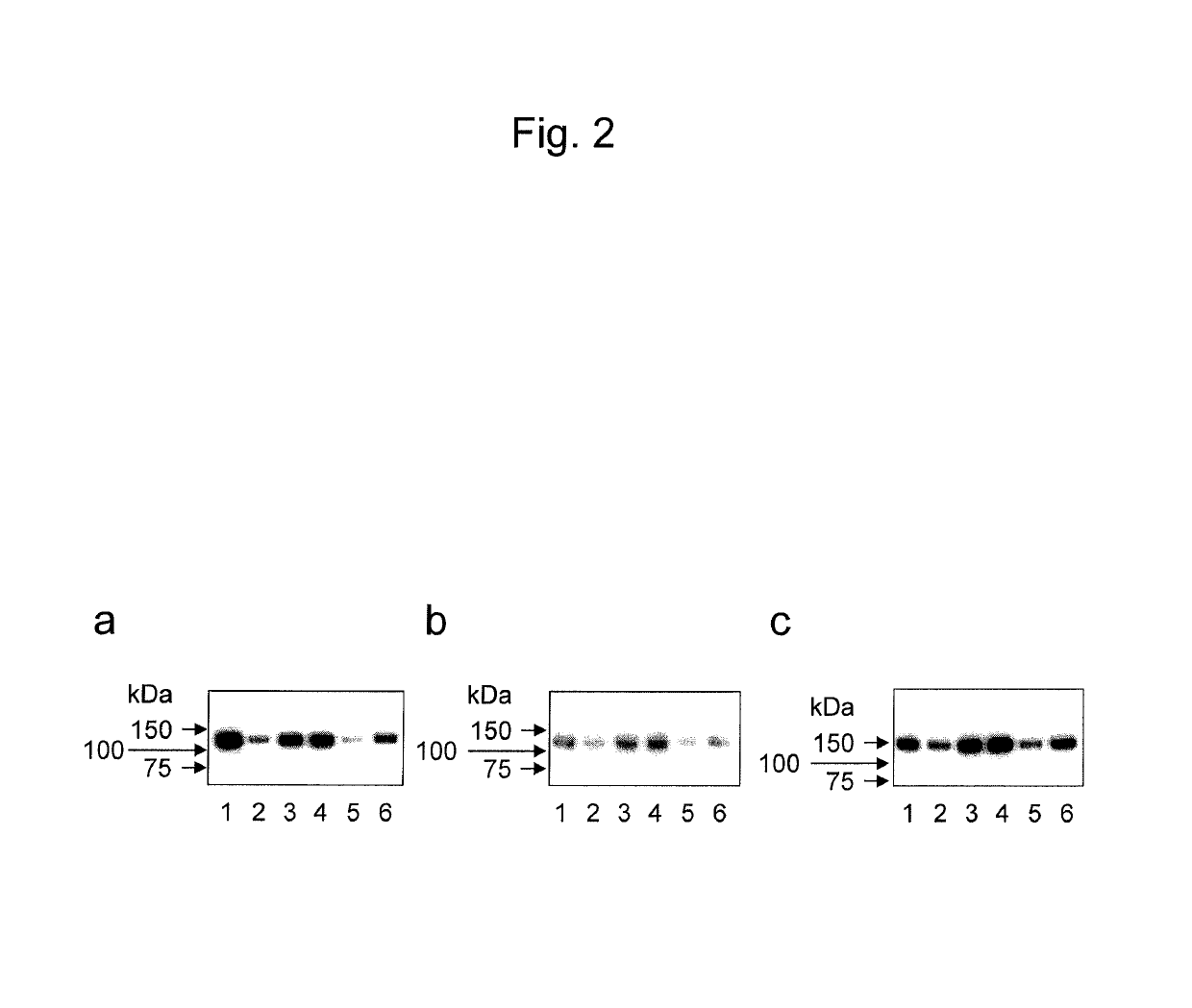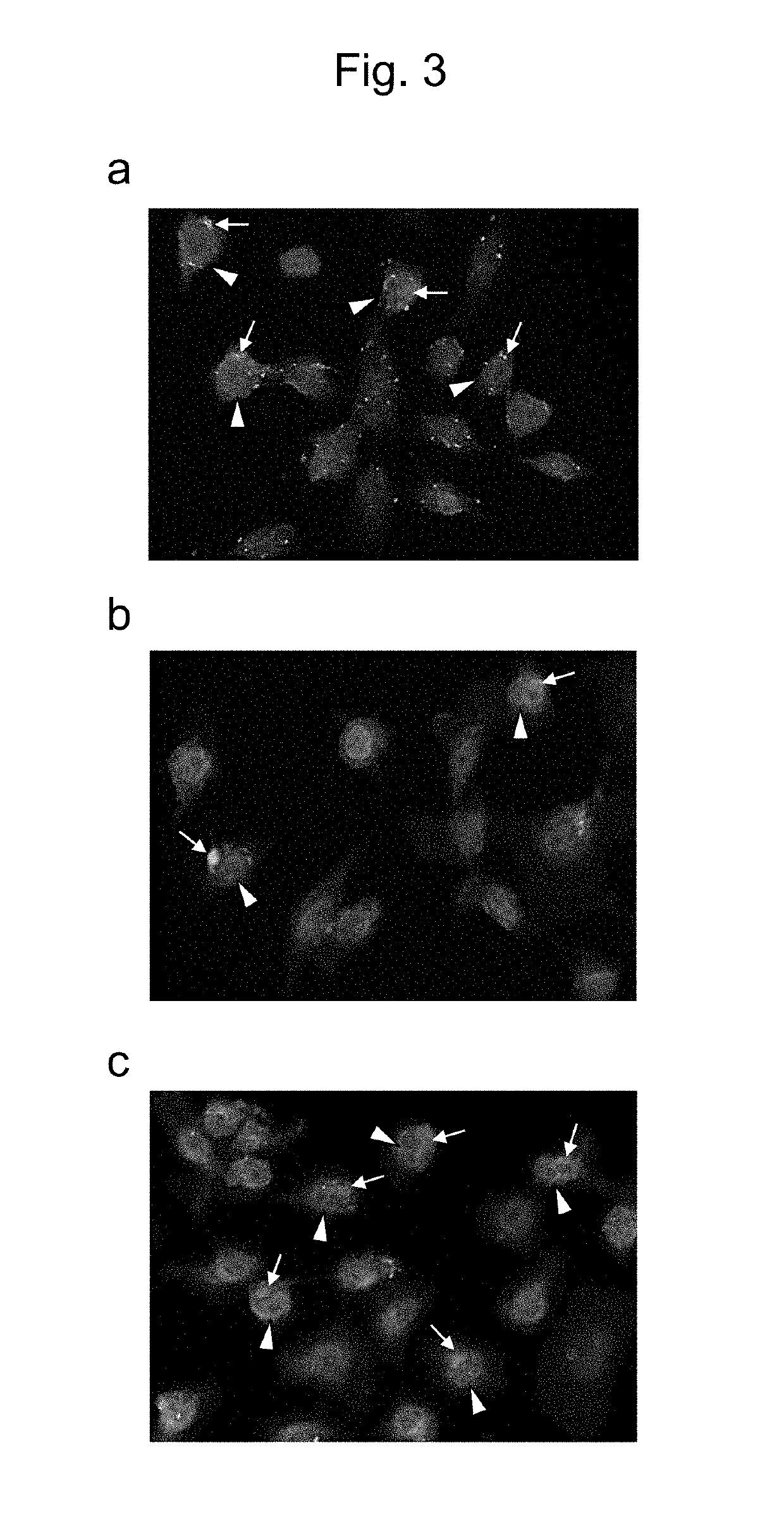Antibody for detecting epithelial ovarian cancer marker and method for diagnosing epithelial ovarian cancer
an epithelial ovarian cancer and marker technology, applied in the field of anti1, can solve the problems of poor prognosis of the disease, the highest mortality among gynecologic cancers, and the difficulty of detection of epithelial ovarian cancer, and achieve the effect of high accuracy ra
- Summary
- Abstract
- Description
- Claims
- Application Information
AI Technical Summary
Benefits of technology
Problems solved by technology
Method used
Image
Examples
example 1
Preparation of Anti-MGAT5B Antibody and Hybridoma Producing the Antibody
1. Selection and Preparation of Immunogen
[0142]An immunogen MGAT5B gene was selected by real-time PCR analysis on transcripts of a total of 186 glycosyltransferases known in the art in ovarian cancer cell lines RMG-I, RMG-II, and RMG-V (all derived from clear cell adenocarcinoma), RMUG-S (derived from mucinous adenocarcinoma), peripheral blood cells, and normal tissues of the large intestine, the liver, and the stomach. Specifically, their transcription levels in the ovarian cancer cell lines and the normal tissues were ranked by the comparison of mean values and the comparison of maximum values to select a top glycosyltransferase as an ovarian cancer marker candidate. MGAT5B, one of the selected candidates, was ranked in first in terms of both the mean value and the maximum value and had a much higher transcription level in ovarian cancer cells than in normal tissues. In addition, MGAT5B was placed in a higher ...
example 2
Confirmation of Antigen Specificity of Monoclonal Antibody
[0157]The hybridoma-derived anti-MGAT5B monoclonal antibodies (GT131-12 antibody and GT131-18 antibody) obtained in Example 1 were studied for their antigen specificity.
(Method)
[0158]10 ng of the FLAG-MGAT5B polypeptide fragment obtained in Example 1, 10 ng of the MGAT5B polypeptide fragment obtained by the cleavage of the FLAG tag from the fragment through enzymatic treatment, 1 μL of immunoglobulin- and albumin-free serum from a pool normal human serum (NHS) containing a serum mixture from a plurality of healthy adults, and 0.5 μL of the pool NHS were each electrophoresed using a 10% polyacrylamide gel under SDS-PAGE reduced conditions and transferred to a PVDF membrane. Each membrane was blocked with PBS containing 5% skimmed milk and then reacted with each purified MGAT5B monoclonal antibody (1 μg / mL) at room temperature for 90 minutes. After washing, the membrane was soaked with an HRP-labeled anti-mouse IgG antibody (GE...
example 3
Detection of MGAT5B Polypeptide Fragment by Immunoprecipitation Using Anti-MGAT5B Antibody
(Method)
[0160]The pool NHS was diluted 100-fold with a 50 mM tris buffer solution (pH 8.0) containing 0.15 M NaCl and 0.1% sodium azide. The FLAG-MGAT5B polypeptide fragment prepared in Example 1 was added thereto at a final concentration of 10 μg / mL. This mixture was used as an immunoprecipitation sample. 2 μg of each monoclonal antibody (GT131-2 antibody, GT131-7 antibody, GT131-12 antibody, or GT131-18 antibody) and 20 μL of a protein G gel (GE Healthcare Japan Corp.) were added to 0.5 mL of this sample and mixed at 4° C. for 4 hours using a rotator. The sample solution was discarded by centrifugation, and the protein G gel was washed with the above tris buffer solution. Then, 40 μL of an SDS-PAGE sample buffer was added thereto, and the mixture was heated at 98° C. for 5 minutes to obtain immunoprecipitated fractions.
[0161]Subsequently, the FLAG-MGAT5B polypeptide fragment, each fraction im...
PUM
| Property | Measurement | Unit |
|---|---|---|
| concentration | aaaaa | aaaaa |
| dissociation constant | aaaaa | aaaaa |
| dissociation constant | aaaaa | aaaaa |
Abstract
Description
Claims
Application Information
 Login to View More
Login to View More - R&D
- Intellectual Property
- Life Sciences
- Materials
- Tech Scout
- Unparalleled Data Quality
- Higher Quality Content
- 60% Fewer Hallucinations
Browse by: Latest US Patents, China's latest patents, Technical Efficacy Thesaurus, Application Domain, Technology Topic, Popular Technical Reports.
© 2025 PatSnap. All rights reserved.Legal|Privacy policy|Modern Slavery Act Transparency Statement|Sitemap|About US| Contact US: help@patsnap.com



